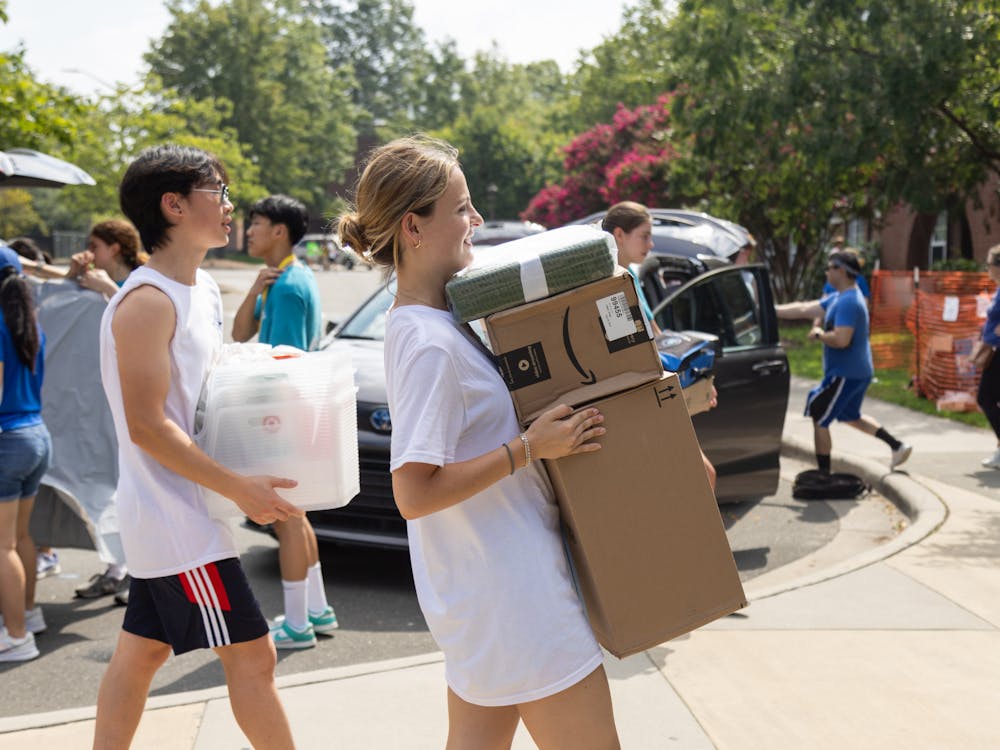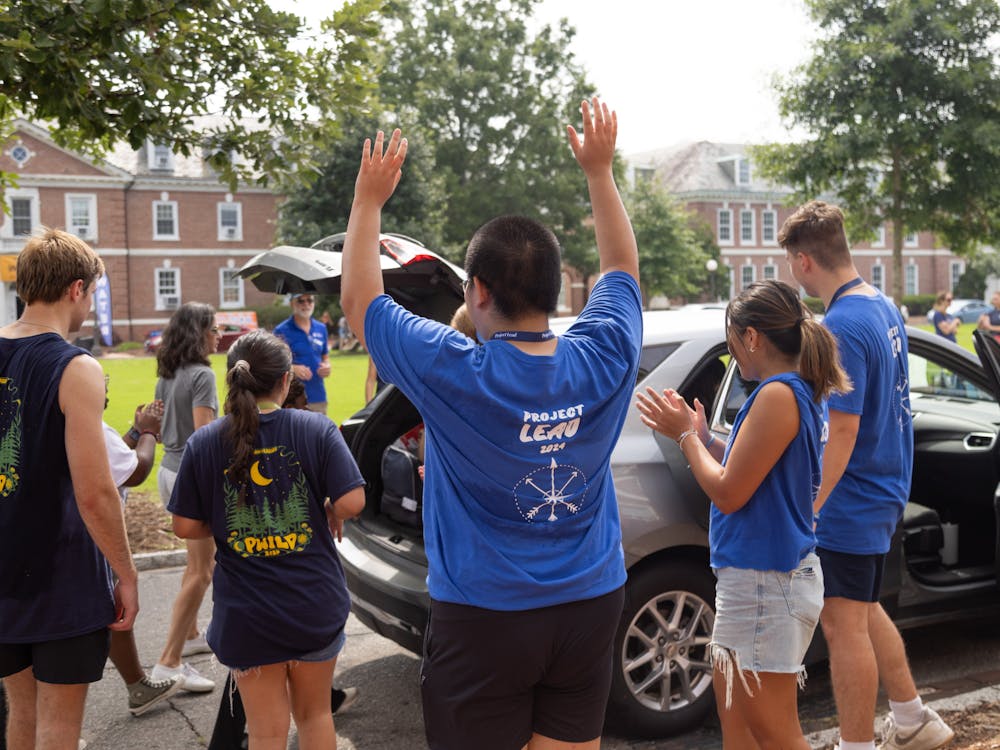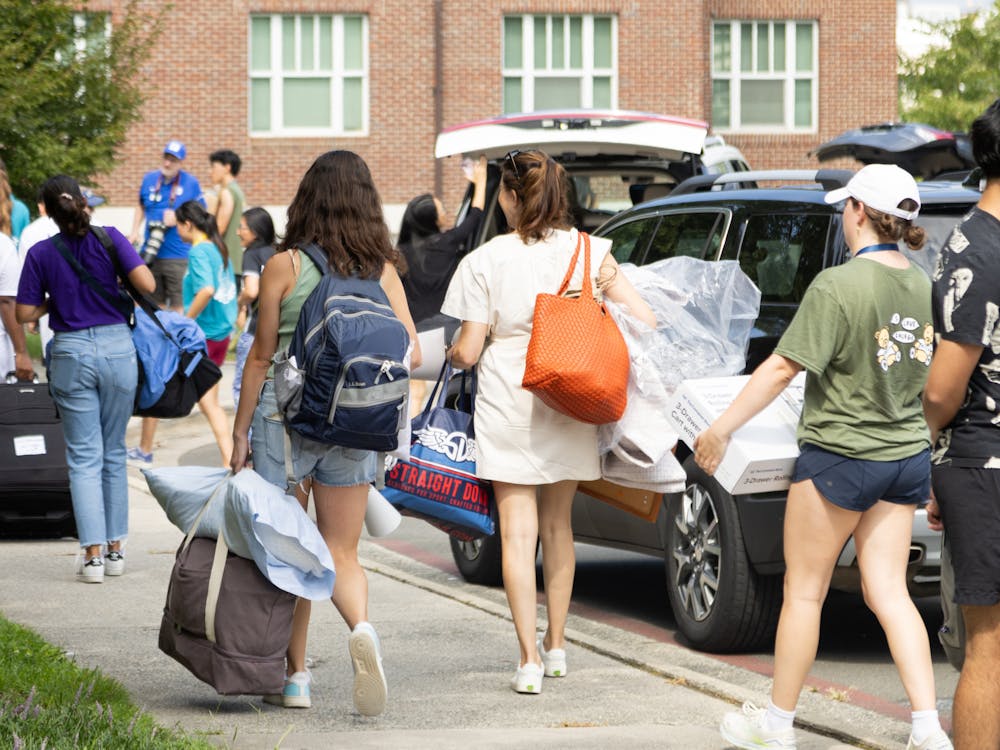After officially transitioning from Trinity College to Duke University in December 1924, Duke’s inaugural first-year class stepped foot on campus in the fall of 1925.
Now in 2024, another crop of first-years will make history as the University’s 100th incoming class.
“The Class of 2028 has arrived at a very special moment in Duke’s history,” President Vincent Price wrote in an Aug. 19 email to The Chronicle. “As we celebrate our Centennial year, the arrival of Duke’s 100th entering class of undergraduates — and the exciting ideas, ambitions and perspectives they bring with them — are in many ways symbolic of the incredible opportunities ahead for the entire University.”
When the Class of 1929 joined the Blue Devil community, The Chronicle commemorated their arrival in a piece titled “The New Freshman.”
“Especially does one have difficulty in discovering the typical freshman because of the heterogenuity [sic] of the members of this class,” the Sept. 23, 1925, article reads. “The trains bring these new men from climes that vary as greatly as sunny California and cold, bleak Alaska, from balsam-clad peaks of the Appalachians to the sandy beaches of Florida, from the rustic mountaineer homes of the Unakas to the palatial residences of Riverside Drive in New York; and in individual differences the freshmen vary as greatly as in environmental circumstances.”
Though much has certainly changed in the intervening century, diversity remains a defining attribute of the Class of 2028.

The 1,711 members of this year’s class hail from across the globe. They also represent an effort by University administration to increase the socioeconomic diversity of Duke’s student body, which Dean of Undergraduate Admissions Christoph Guttentag expressed in a March email to The Chronicle where he noted the University’s ongoing goal of “attracting and admitting a higher percentage of students eligible for Pell grants.”
The Class of 2028 is the first to contend with the Supreme Court’s June 2023 decision to end race-based affirmative action in college admissions.
The incoming class also represents the most selective in University history, with record low acceptance rates for both the Early Decision and Regular Decision application rounds at 12.9% and 4.1%, respectively.
While a century has passed since Duke welcomed its first class, similarities remain between the first Blue Devils and the new first-years.
“Even though they may dress differently, have different accents, cherish different ideals and be unlike in physical appearances, each is a dealer in futurity … and each is a profound optimist,” the 1925 Chronicle article reads.

First-year Caroline McSwain, who hails from a small school in Skaneateles, New York, shared her excitement to be part of an intellectually diverse community, as well as one filled with students passionate both inside and outside of the classroom.
McSwain comes from a long line of Blue Devils, including both her parents and some cousins. But joining the Duke community in its 100th year is particularly special for her and her family for another reason — her great-grandfather, Wyatt McSwain, was a part of Duke’s inaugural first-year class in 1924, marking a centennial of Duke history within her own family.
When speaking about the significance of this milestone, McSwain shared that her family “is super excited” and that “it’s a big deal in [their] house.”

First-year Jada Ennine comes to Duke from Powder Springs, Georgia. Like McSwain, she is “looking forward to the community aspect of Duke,” including meeting new students through her orientation group Project Wellness and student organizations she hopes to later join. She expressed gratitude for “all the help” provided by upperclassman orientation leaders during move-in, which made her experience a “smooth process.”
First-year Vassilios Ringas from Richmond, Virginia, shared his goal of pushing himself beyond his comfort zone and what he would “normally do” during his time at Duke. He said he chose to attend the University because of its balance between having strong academics and a socially engaged student body.
Helping Ringas move in was his father, Evangelos Ringas, Pratt ‘96, who recounted his first-year move-in experience. He emphasized the diversity that he witnessed at Duke, “even in the early 90s.”
Get The Chronicle straight to your inbox
Sign up for our weekly newsletter. Cancel at any time.
“As a freshman, when I moved in, [I realized] I had a person next to me from Germany and a person a couple doors down who came overseas from China,” he said. “… I learned a lot from different cultures and having late-night dorm conversations.”

Duke has seen significant change throughout the past 100 years. Over the course of 10 presidential administrations, the University greatly increased its enrollment, admitted its first students of color and merged the men’s and women’s colleges. And through it all, Duke students’ pursuit of excellence persists and is continually refined with each new class.
“This is a moment of transformation for Duke, when we can see more clearly than ever before how we might lead in the century to come,” Price said of Duke’s Centennial. “It’s also a moment of extraordinary continuity, as the seeds of our current and future excellence that were planted and cultivated throughout our University’s first hundred years come into bloom.”
Andrew Bae and Halle Vazquez contributed reporting.

Zoe Kolenovsky is a Trinity junior and news editor of The Chronicle's 120th volume.

Abby Spiller is a Trinity junior and analytics editor of the audience engagement team of The Chronicle's 121st volume. She was previously editor-in-chief for Volume 120.

